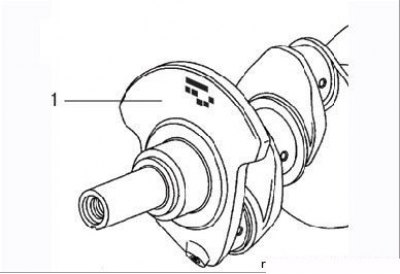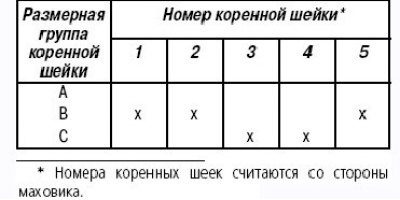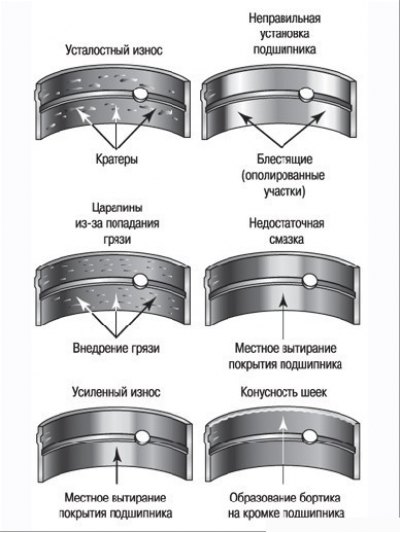
Figure 3.68. Main bearing journal diameter marking on crankshaft counterweight (1)
Wash the crankshaft with kerosene or other suitable solvent. Dry it with compressed air if possible. Clean the oil holes with a wire and blow with compressed air. On the counterweight on the side of the toe of the shaft there is a marking by which you can determine the diameters of the journals of the main bearings (Figure 3.68). The decoding of the marking is given in table. 3.5.
Table 3.5. Deciphering the markings on the crankshaft

Inspect the main and connecting rod journals for wear, cracks, scuffing, electrochemical corrosion. If such signs are found, grind the crankshaft at a specialized service station.
In this case, it will be necessary to install new liners of the appropriate repair size.
Using a micrometer, measure the diameter of each of the bearing journals in several places. Compare the measurement results with the values given in Table. 3.3. If the journals are worn more than 0.025 mm, the crankshaft should be reground to the repair size.
If measurements taken at 90°intervals give different diameters, this means that the main journal is oval. The discrepancy between the diameters measured at different points along the length of the main neck indicates the presence of a taper of the neck. As in the previous case, grinding is necessary, followed by the installation of repair size liners.
Check the surfaces mating with the crankshaft seals. If they have significant scuffing or damage, consult a specialist for advice on the suitability for further use of the crankshaft.
Using a V-prism and a dial gauge, measure the radial runout of the crankshaft. The maximum allowable radial runout is no more than 0.05 mm. If the runout exceeds this value, consult a specialist for advice on the suitability of the crankshaft for further use.
Inspection of the liners of main and connecting rod bearings
Even if you plan to use new liners, which is highly recommended, do not throw away the old ones immediately after removal, as a thorough inspection of them can provide valuable information about the condition of the engine and the causes of malfunctions. Signs of major defects can be seen in Figure 3.69.

Figure 3.69. The main types of damage to bearing shells
Damage caused by the ingress of foreign particles into the engine looks like longitudinal marks on the main and connecting rod bearings. Abrasive particles sometimes remain in engine parts after reconditioning, especially if the parts have not been thoroughly cleaned using the proper methods. Often these are metal particles that appeared after machining and as a result of engine wear during operation. They can get into the oil, and from it, passing through the filters, into the bearings. The best way to prevent such damage is to keep all engine parts immaculately clean, both during assembly and during engine operation.
Carry out, as indicated in the operating instructions, regular replacement of engine oil and filter.
Damage due to lack of lubrication looks like the liner material has been rubbed, chipped, or squeezed out of the steel base. The reason for this is overheating, which causes the oil to dilute (often the liners get a bluish tint), overload (which leads to the extrusion of oil from the bearing coating and, as a result, chipping and cracking). Lack of lubrication can also be caused by excessive clearances in the oil pump or constant operation of the engine at high speeds, clogged lubrication channels (use of inappropriate oil, its untimely replacement).
Electrochemical corrosion of bearing shells can be caused by constant travel over short distances. In this case, the heat generated during a short trip by the engine is insufficient to remove water vapor and corrosive gases. These substances accumulate in engine oil, forming acid and sludge. As oil flows to the engine bearings, the acid attacks the bearing material and causes corrosion.
Incorrect installation of the liner during assembly also leads to its failure. Bushings that are too tight leave insufficient running clearances, resulting in a lack of lubrication. Dirt or foreign particles that have fallen on the back of the liner cause it to bulge and wear out. Therefore, do not touch the inner working surface of the earbuds with your fingers when assembling - you may scratch the surface, which requires careful handling, or leave dirt particles on it.
As already mentioned, with any disassembly of the engine, it is recommended to replace the liners; otherwise, you get only apparent savings.
